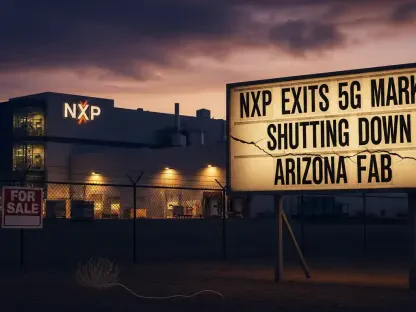In a stunning display of regulatory power, the Federal Communications Commission (FCC) has executed an unprecedented move by effectively shutting down 185 telecom providers in a single, sweeping action, marking a historic crackdown on illegal robocalls and non-compliant practices in the telecommunications industry. This drastic measure, one of the largest enforcement actions ever taken by the agency, has sent shockwaves through the sector, raising critical questions about the balance between consumer protection and corporate rights. By removing these companies from the Robocall Mitigation Database (RMD), the FCC has mandated that all voice service and intermediate providers cease accepting their traffic within a tight window of just two business days. This bold step underscores a growing frustration with the persistent robocall epidemic plaguing consumers and highlights the agency’s determination to sanitize the industry. As details of this monumental decision unfold, the implications for both the affected providers and the broader telecom landscape come into sharp focus, setting the stage for a deeper examination of regulatory authority.
The Mechanics of a Historic Crackdown
The FCC’s decision to remove 185 telecom providers from the Robocall Mitigation Database represents a calculated and aggressive strategy to combat illegal robocalls, a nuisance that has long irritated consumers across the nation. This database serves as a critical registry for companies to demonstrate compliance with robocall mitigation standards, and removal from it effectively halts their ability to operate within the legal framework of the telecommunications network. By issuing an order that prohibits voice service providers from accepting traffic from these entities, the agency has not only disrupted their business models but also set a stringent deadline of two business days for compliance. This rapid enforcement action, described by industry observers as both swift and severe, targets a wide range of companies, from well-known players to smaller firms, illustrating the FCC’s intent to leave no stone unturned in its quest to eliminate bad actors. The scale of this operation is staggering, as never before has such a large number of providers been simultaneously barred in one fell swoop, signaling a new era of regulatory oversight.
Beyond the immediate logistical impact, the mechanics of this shutdown reveal a deeper layer of regulatory intent focused on reshaping industry behavior through decisive action. The FCC’s order explicitly bans the affected companies from refiling for inclusion in the RMD without express permission from the Wireline Competition Bureau and another unspecified bureau, adding a significant barrier to re-entry. This condition ensures that reinstatement is neither automatic nor guaranteed, placing immense pressure on the targeted providers to overhaul their practices if they hope to resume operations. Furthermore, the sheer breadth of the action—encompassing a diverse array of 185 entities—demonstrates the agency’s willingness to cast a wide net, prioritizing consumer protection over the potential collateral damage to businesses. This approach, while effective in sending a strong message, also raises questions about the long-term effects on competition within the telecom sector, as smaller providers may struggle to recover from such a severe blow compared to larger, more resilient corporations.
Regulatory Power and Procedural Concerns
The FCC’s authority to execute such a sweeping shutdown of 185 telecom providers overnight showcases the immense regulatory power wielded by the agency, particularly in its mission to safeguard consumers from fraudulent telecom practices. This action, while rooted in the urgent need to curb the robocall epidemic, highlights the agency’s ability to act with immediacy and force, bypassing traditional timelines that might allow for more gradual enforcement. By mandating an abrupt cessation of traffic acceptance, the FCC has positioned itself as a formidable enforcer, willing to take drastic measures to ensure compliance with federal standards. The underlying message is clear: non-compliance will no longer be tolerated, and the consequences will be both immediate and severe. This historic move aligns with a broader trend of intensified oversight in the telecommunications industry, reflecting years of mounting consumer complaints and growing political pressure to address intrusive and often deceptive calling practices that have eroded public trust.
However, alongside this display of regulatory might, significant concerns have emerged regarding the procedural fairness of the FCC’s approach in this unprecedented crackdown. Critics argue that the abrupt nature of the shutdown, enacted without apparent due process, raises troubling questions about the balance between governmental authority and corporate rights. While the targeted companies are alleged to have engaged in improper practices, the lack of a transparent appeals process or prior warning for many of these providers suggests a potential overreach that could set a dangerous precedent for future regulatory actions. The speed and scale of the order—removing 185 entities in one stroke—leave little room for affected companies to respond or rectify their standings, potentially stifling legitimate businesses caught in the crossfire. This tension between the need for swift consumer protection and the risk of disproportionate impact underscores a critical debate within the industry, as stakeholders grapple with how to support robust regulation without undermining fundamental principles of fairness and accountability.
Broader Implications for the Telecom Industry
The FCC’s overnight shutdown of 185 telecom providers reverberates far beyond the immediate impact on the affected companies, signaling a transformative shift in the telecommunications landscape. This historic enforcement action serves as a stark warning to the entire industry that adherence to robocall mitigation standards is no longer optional but a non-negotiable requirement for survival. As the agency tightens its grip, other providers are likely to reassess their practices, investing heavily in compliance measures to avoid similar fates. This could lead to a ripple effect, where innovation in call authentication technologies and consumer protection tools accelerates, driven by the fear of regulatory repercussions. However, it may also create a chilling effect, particularly for smaller firms with limited resources to navigate the complex and costly compliance landscape, potentially consolidating market power among larger players who can better absorb such pressures. The long-term outcome remains uncertain, but the precedent set by this action undeniably reshapes the industry’s operational norms.
Moreover, this crackdown amplifies the ongoing narrative of consumer protection as a central pillar of telecom regulation, reflecting a public demand for safer and more trustworthy communication channels. The FCC’s focus on eliminating illegal robocalls through such a massive sweep underscores a commitment to restoring faith in the system, a priority that has gained traction amid rising scams and fraud facilitated by non-compliant providers. Yet, the scale of this intervention also prompts a broader discussion about the future of regulatory frameworks in balancing enforcement with economic stability. As the industry adapts to this new reality, there is an opportunity for policymakers and stakeholders to collaborate on refining guidelines that prevent misconduct without disproportionately harming legitimate businesses. Looking ahead, the telecom sector must brace for continued scrutiny, with the FCC’s actions likely serving as a catalyst for more stringent policies and oversight mechanisms in the coming years, ensuring that consumer interests remain at the forefront of regulatory priorities.
Reflecting on a Regulatory Milestone
Looking back, the FCC’s decisive action to shut down 185 telecom providers in a single order stood as a defining moment in the battle against illegal robocalls, marking one of the most significant enforcement efforts in the agency’s history. This sweeping measure not only disrupted the operations of numerous companies but also sent an unmistakable signal to the industry about the consequences of non-compliance. As the dust settled, the focus shifted toward actionable next steps for both regulators and providers. For the FCC, the challenge lay in refining its approach to ensure that future interventions balanced consumer protection with procedural fairness, addressing concerns about overreach. For telecom companies, the priority became investing in robust compliance strategies to meet stringent standards. Additionally, this milestone opened the door for broader collaboration between government and industry to develop innovative solutions, such as advanced call-blocking technologies, to further shield consumers. Ultimately, this historic crackdown paved the way for a reimagined telecom landscape, one where accountability and trust could take center stage.









